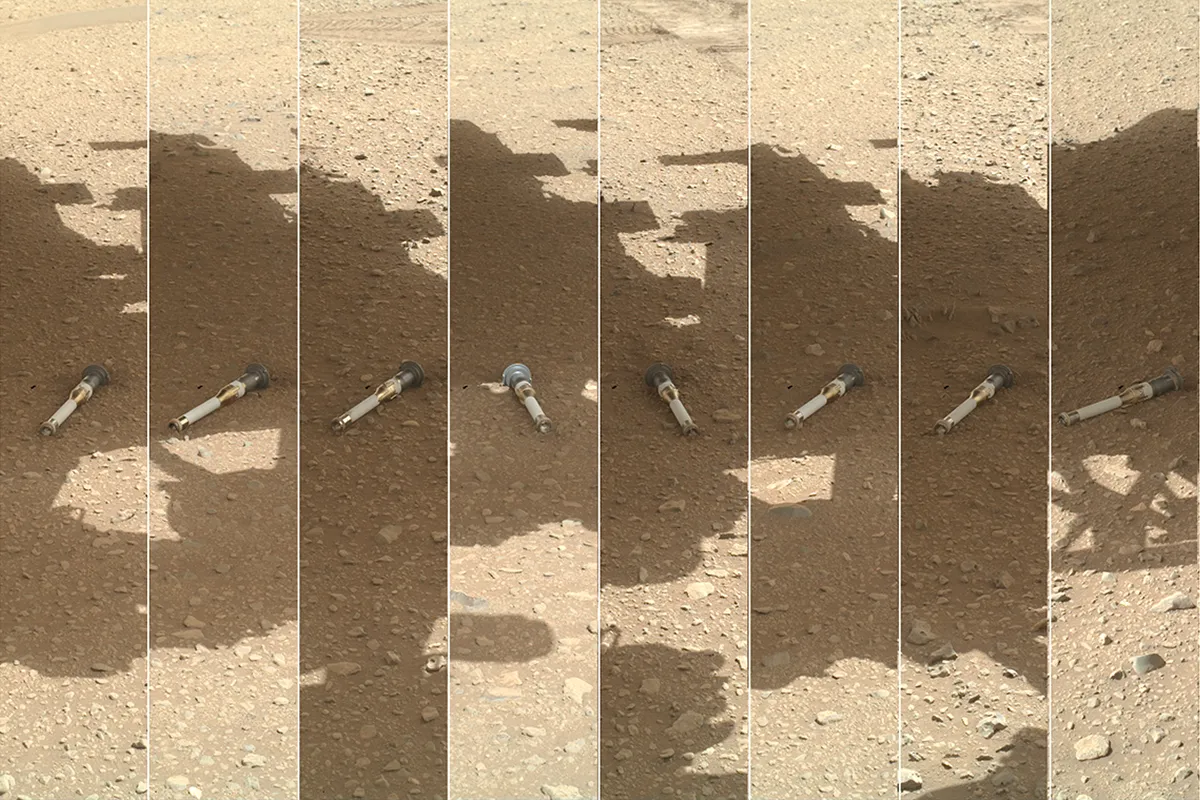NASA’s quest to return samples from Mars could be in trouble.
The agency is still committed to returning material from the Martian surface to Earth, but after an independent review predicted the project would run over time and over budget, it is now requesting novel concepts on how to go about this.

NASA’s Mars Sample Return programme is a multi-phase project to return Martian rock and soil samples to Earth.
The Perseverance rover is the first phase of this endeavour and is currently on Mars, collecting and caching samples.
The plan is to follow up with two more missions: a NASA-led rover and ascent vehicle to collect the samples and launch them into orbit; and a spacecraft developed by the European Space Agency to capture and return them to Earth.
Sample-return missions like those to asteroids or the Moon enable scientists to study pieces of the Solar System under pristine laboratory conditions.
Having a piece of Mars to study with a suite of instruments on Earth could enable scientists to learn much more about the Red Planet's history, and whether it could ever have supported life.

Mars sample return mission runs into trouble
In 2023, an independent report evaluated whether the programme was on track.
It found the overall project cost to NASA would be an estimated $11 billion and that samples would be returned no sooner than 2040.
NASA has now released its response.
"We are committed to retrieving the samples. It is an important national objective that we return these samples," says NASA administrator Bill Nelson.
"The bottom line is an $11 billion budget is too expensive and a 2040 return date is too far away."

Given NASA’s current budget, this would require cannibalising the funding for other science programmes, while the agency is currently working towards landing humans on Mars in the 2040s.
As a result, the agency has called on all NASA centres, as well as partners in the wider space industry, to ask for new plans to return the samples more quickly and affordably.
These include suggestions for ways to use already proven technologies, reducing the need for lengthy and expensive testing, as well as finding ways to reduce the mission’s complexity, such as using a smaller ascent vehicle.

"To organise a mission at this level of complexity, we employ decades of lessons on how to run a large mission, including incorporating the input we get from conducting independent reviews," says Nicky Fox, NASA’s associate administrator, Science Mission Directorate.
"Our next steps will position us to bring this transformational mission forward and deliver revolutionary science from Mars – providing critical new insights into the origins and evolution of Mars, our Solar System and life on Earth."

